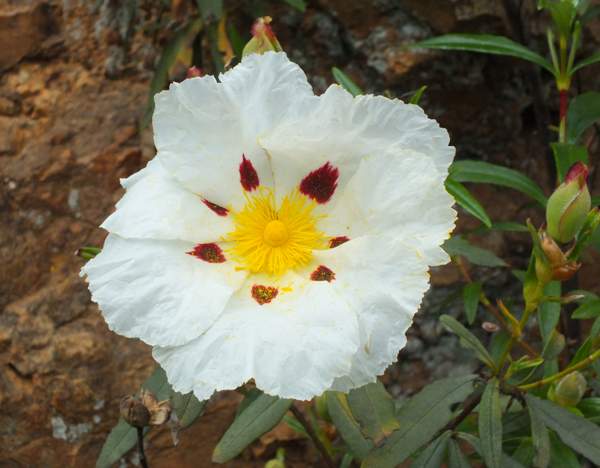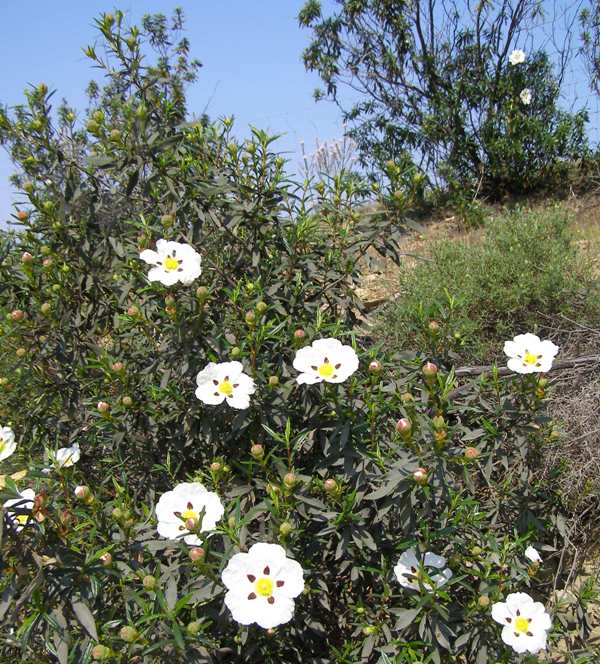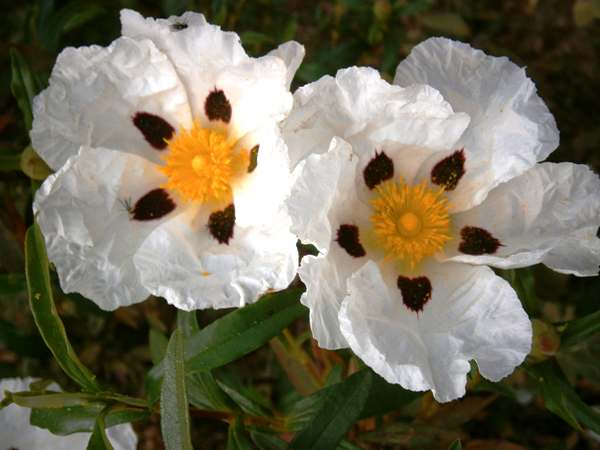Cistus ladanifer - Gum cistus
Phylum: Magnoliophyta - Class: Equisetopsida - Order: Malvales - Family: Cistaceae

These striking shrubs are very familiar to people familiar with British gardens, but to see them at their best the Iberian Peninsula is the place to go.

Description
The flowers have rather crumpled-looking petals, some pure white and others white with dark maroon spots. The sticky, oderous substance which comes from the tough, dark green leaves of the plant is used in the perfume industry.
Habitat
From the maquis (areas with shrubs up to 5 metres in height) and well into the hills of Portugal and the Iberian Peninsula in general Gum Cistus flourishes.

Distribution
Gum Cistus, a member of the Rockrose family, is native to Spain, Portugal, southern France and North West Africa. In other places - Cyprus for example - this plant has been introduced and is now naturalised.
Blooming times
In their native (Mediterranean) countries, Gum Cistus flowers can be seen from April to June.
Similar species
Some other species of cistus to appear in the Mediterranean region include Cistus Albidus (Grey-leaved Cistus) and Cistus salviifolius (Sage-leaved Cistus). Many of the bushes are parisitised by Cytinus hypocistis, and the best time to see this fascinating plant (growing around the roots of the cistus bushes) is from mid-April until June.
The specimens shown here were photographed in the Algarve in Portugal during March.
Please Help Us: If you have found this information interesting and useful, please consider helping to keep First Nature online by making a small donation towards the web hosting and internet costs.
Any donations over and above the essential running costs will help support the conservation work of Plantlife, the Rivers Trust and charitable botanic gardens - as do author royalties and publisher proceeds from books by Pat and Sue.

